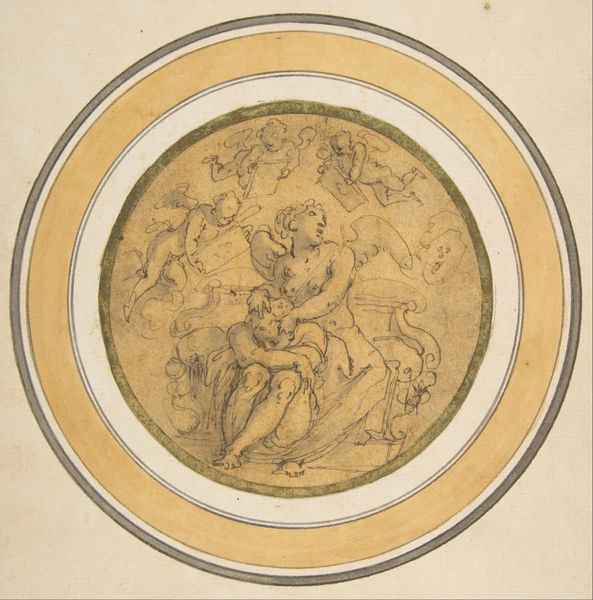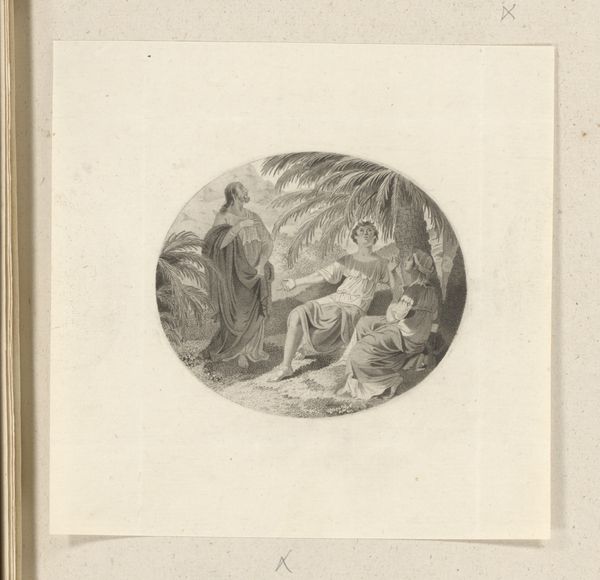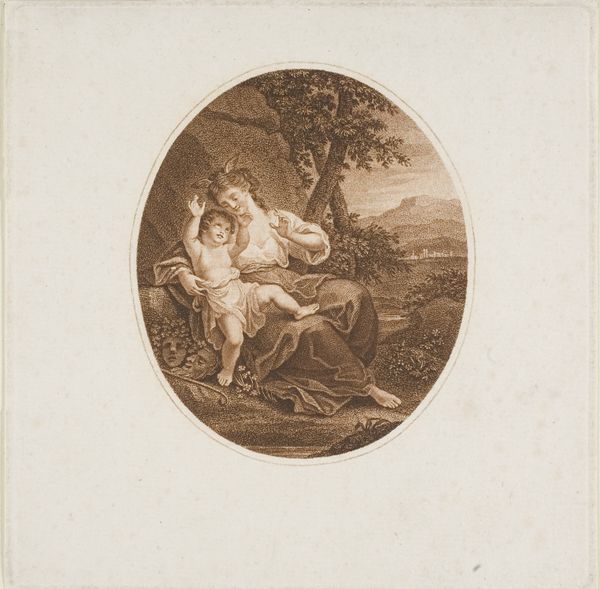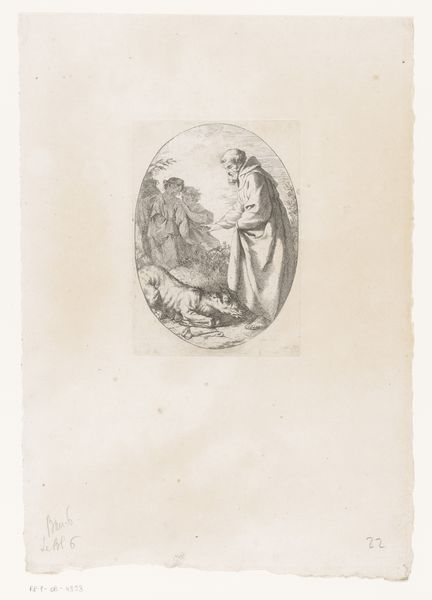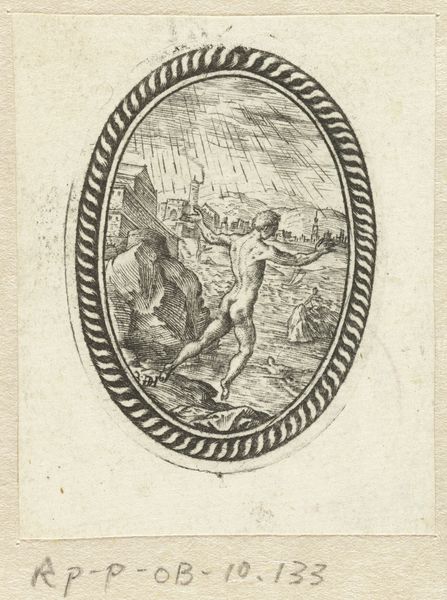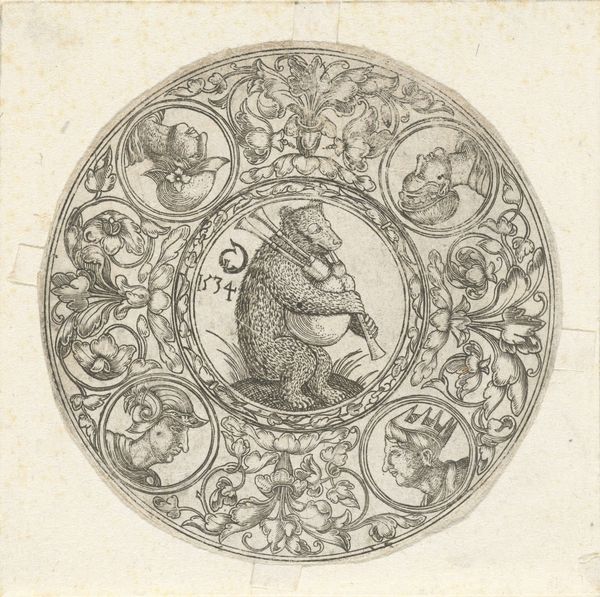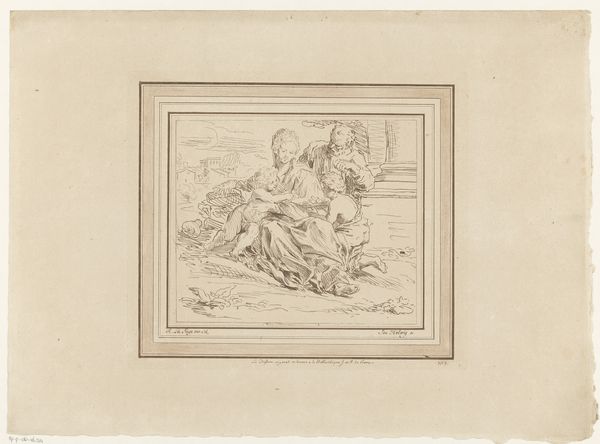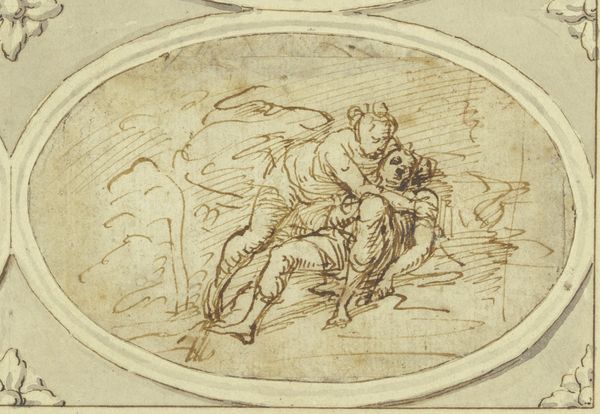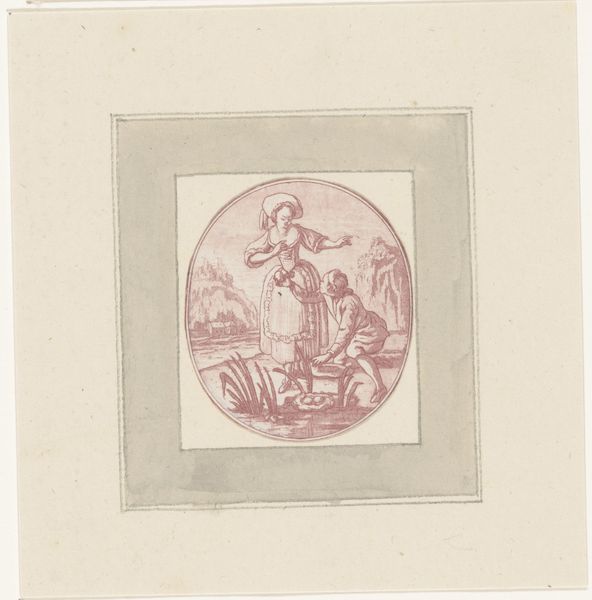
drawing, print, paper, ink
#
drawing
#
allegory
# print
#
pencil sketch
#
charcoal drawing
#
mannerism
#
figuration
#
paper
#
ink
#
men
#
watercolour illustration
#
history-painting
Dimensions: Diameter: 3-11/16 in. (9.4 cm)
Copyright: Public Domain
Editor: This ink and pencil drawing, “Allegory of Forgetfulness,” made sometime between 1565 and 1575 by Giorgio Vasari, really strikes me as both delicate and dramatic. All these figures seem to tumble together! What catches your eye? Curator: The materiality itself. Look at how Vasari uses the pen and ink not just to delineate forms, but to build tone and texture. It’s not just a drawing; it’s an object crafted from specific materials. Editor: Right! And this was a print... so it has something to do with reproducible media and commodity. Can you talk about the material's cultural context? Curator: Precisely! Consider the cost of paper at the time. This wasn’t mass-produced stuff. It speaks to a specific patron, a specific market. These detailed allegories reflect Mannerism taste for complexity. Note how printmaking allowed Vasari’s ideas to be distributed amongst workshops. What implications did the mass production of imagery have on art at the time? Editor: Hmm, so the print medium democratizes art, but at the same time, its inherent reproducibility can cheapen the original artistic vision. I mean how did this print circulate to larger social class/consumers? Curator: Exactly! And don’t forget the labor involved. We need to account for the engravers, the distributors, and the consumers. Consider the economics behind art! Did this understanding reshape your view on the art piece? Editor: Definitely. Thinking about this as an object deeply embedded in a network of production and consumption… that makes the idea of "forgetfulness" even more poignant. Thanks for highlighting the materials and conditions in making this piece! Curator: My pleasure. Seeing art as bound to a material world can illuminate meanings we often overlook.
Comments
No comments
Be the first to comment and join the conversation on the ultimate creative platform.
